This article was co-authored by Kathryn Kellogg and by wikiHow staff writer, Hunter Rising. Kathryn Kellogg is the founder of goingzerowaste.com, a lifestyle website dedicated to breaking eco-friendly living down into a simple step-by-step process with lots of positivity and love. She's the author of 101 Ways to Go Zero Waste and spokesperson for plastic-free living for National Geographic.
There are 19 references cited in this article, which can be found at the bottom of the page.
This article has been viewed 91,675 times.
Climate change is one of the biggest issues we’re facing on our planet. Even though some people aren’t aware of how seriously it affects the world, there are a lot of things you can do to keep them informed. We’ll go over some easy ways to bring up climate change in conversation and move on to actions you can take in your community and get the word out there!
Steps
Share news on social media.
-
Reach all your friends and family with reputable articles. Look online for videos, news articles, and recent research about climate change from sources you trust, such as the EPA, the NOAA, or NASA. Post the links on your Facebook, Twitter, or Instagram feeds and encourage other people to share them as well. Since a lot of people get their information online, it’s a great way to draw the most attention to the problem.[1] X Research source
- If you can, look for video clips that are around 30–45 seconds long since people are more likely to watch something short than read an entire scientific article.
- You can also trust facts from academic institutions and journals since they have to go through many rounds of research.
- Always read through an article and check where it’s coming from before you post it so you don’t spread any misinformation.
Mention scientific research and evidence.
-
Convince skeptical people with facts and data you’ve found. Read up on the most recent studies that you can find, and make sure they’re from reputable sources, such as a government climate site like the EPA or a science journal. When you’re talking to someone about climate change, focus your discussion on what’s backed up by science since it can be more convincing. Share where you got your information since people are more willing to believe and trust what you’re saying if they know it’s from someone reliable.[2] X Research source
- For example, you could say something like, “Did you know that Earth’s average temperature could rise by another 8.6°F in the next 100 years?”
- Some skeptics may not believe scientists or evidence. It might be better to focus your energy on talking to the people who believe in climate change instead of fighting with someone who doesn’t.
Bring up real-life examples.
-
Talk about the visible impacts if someone doesn’t see the big picture. Some people might not notice the effects of climate change and don’t understand how severe of a problem it is. Discuss the changes that have happened in your community due to climate change so they have a better idea of the problems. You can also cover how climate changes have affected a person’s interests, such as traveling or nature.[3] X Research source
- For example, you could mention how new insect pests have moved into your area due to the changing climate of their normal habitat.
- As another example, if your friends want to visit Europe, you can mention how the rising sea levels have flooded Venice, Italy.[4] X Research source
- If the person loves plants and animals, bring up how 20–30% of species are at risk of extinction if temperatures keep rising.[5] X Research source
Talk about global solutions to the problem.
-
Focus on how to solve issues to let someone know change is possible. Even though climate change is really scary and can feel inevitable, there are so many people fighting to improve our situation. Give the person hope by telling them about the steps communities and countries around the world are taking to help out. This can help the person realize that they aren’t powerless and they can work to fix the problems.[6] X Trustworthy Source National Resources Defence Council Multinational environmental advocacy group focused on grassroots activism and legislative action Go to source
- For example, you can bring up how countries are shifting to alternative energy sources, such as wind and solar power.
- You can also bring up initiatives that are happening around the globe, such as the Turn It Off campaign that asks people to turn off their vehicle’s engines instead of idling to reduce carbon emissions.[7] X Trustworthy Source National Resources Defence Council Multinational environmental advocacy group focused on grassroots activism and legislative action Go to source
Discuss personal actions that fight climate change.
-
Let people know what they can do at home to be proactive. There are so many things everyone can do to reduce their carbon footprint and slow down climate change. Go over a few simple adjustments they can make, like switching to energy-efficient lights, composting, recycling, and carpooling.[8] X Expert Source

Sustainability Specialist Expert Interview. 28 June 2019. Tell them how products they only use once make a lot of waste and explain how to look for long-lasting reusable alternatives.[9] X Trustworthy Source National Resources Defence Council Multinational environmental advocacy group focused on grassroots activism and legislative action Go to source- Other things you can do at home include conserving water, insulating your walls, and buying energy-approved appliances.
Hang up awareness posters.
-
Reach the people in your community with some simple signage. You can design your own poster or find a lot of premade ones online. Display some facts, images, or infographics on your poster that help you get your point across, such as predictions of the rising sea levels or melting glaciers. Hang the posters up in your community and in places that get a lot of foot traffic in your neighborhood.[10] X Research source
- For example, you might include facts like how the hottest days of the year will feel 10–15° hotter by 2100 if we continue creating emissions.[11] X Research source
- As another example, you can include pictures of endangered animals and write than 20–30% of wildlife species might go extinct if temperatures keep increasing.[12] X Research source
- Many climate change organizations have free images and graphics online that you can print off and use for your posters.
- Make sure you ask for permission before hanging up posters at businesses or schools since they may have different policies.
Create art relating to climate change.
-
Showcase the effects and images of climate change through your work. Art inspires so many people, so it might be a good way to show your concerns about climate change. You can make paintings, collages, photographs, sculptures, or whatever medium you think conveys your message the best. Write an artist’s statement about how climate change inspired your piece so someone viewing it knows exactly what you’re trying to portray.[13] X Research source
- For example, you can edit a photo to make a famous landmark look like it’s underwater due to rising sea levels.
- As another example, you can recycle pieces of trash or plastic to make a collage that shows how much someone throws away on a regular basis.
Sign a petition for climate action.
-
Show your support for a cause online. There are so many petitions online that ask governments and companies to be more aware of their climate impact. Search on sites like Change.org for petitions relating to climate change and read through what they’re hoping to do about it. Add your signature to any causes that you believe in and share them with other people so they can sign them too.[14] X Research source
- Many petitions let you share them to social media after you add your signature so your friends and family see what you’re supporting.
Give presentations about climate change.
-
Show what you’ve learned in an easy visual slideshow. You can cover climate change as a whole concept, or go more in-depth about a few of the effects it has. Do a lot of research so you find reliable sources, and put the information into your presentation. Include a few images and facts on each of your slides to keep anyone you’re presenting to involved and interested.[15] X Research source
- This is perfect if you’re in school and need to do a project for science or history.
- Keep your audience in mind when you’re making a presentation. If you’re presenting to younger kids, make sure you use simple issues they can relate to, such as how picking up litter keeps the playground clean and gets rid of harmful waste in the environment.
Host a service project.
-
Spread the word locally with a community event. Talk with the people in your neighborhood or at your school to see if there’s something you can do to help raise awareness of climate change. You could hold a bake sale and donate the proceeds to a climate organization, organize a park clean-up day, or start a community garden. Let people know how the project helps the environment or what organizations you’ll donate to with the money you’ve earned.[16] X Research source
Volunteer with a community climate committee.
-
Give your time to help out your local environment. Search for groups in your city or community that are actively working to improve your local area. They may work to clean up green spaces in your community, make new habitats for wildlife, and plant new species that can adapt to the climate. Ask how you can help out the most effectively so you can reduce the environmental impact in your area and bond with other people who believe in the same cause.[17] X Research source
- If you’re still in school, see if they have any environmental clubs or extracurricular organizations that you can be a part of.
Donate to an organization.
-
Give money to people who can help on a wider scale. A lot of non-profit organizations work to improve the environment and spread awareness about climate change. If you have some extra money, donate what you can so they can help move the fight against climate change even further. Some great organizations you can donate to include:[18] X Research source
- The Coalition for Rainforest Nations
- The Union of Concerned Scientists
- The Climate Reality Project
- The Environmental Defense Fund
- The Clean Air Task Force[19] X Research source
Reach out to local politicians.
-
Let your representatives know that climate change matters. Your local government can help pass policies that improve the environment and regulate emissions. Vote for politicians that have green policies and support fighting climate change. While they’re in office, write letters to your representatives letting them know your concerns and urge them to do something about climate change.[20] X Research source
- Research the representatives in your city and state so you can see their policies and reach out to them.
- We know it can be a little scary to call or mail a letter to politicians, but many of them are really happy to hear your concerns so they can represent you better.
Become a citizen scientist.
-
Help scientists out by tracking climate change in your area. Many researchers look for citizens to take notes on when plants bloom, how polluted the water is, or how wildlife is affected by the changing weather. Reach out to local climate activists and organizations to see how you can get involved in your area. You can also look for national projects you’re interested in and see if they’re recruiting any volunteers in your area.[21] X Research source
- You can find a list of citizen science projects in the US here: https://www.citizenscience.gov/catalog/#.
- You’ll usually have to monitor a specific site throughout an entire season, but you’ll receive training on exactly what you need to do.
Attend a protest or rally.
-
Voice your concerns in person with others in your community. There are so many marches and rallies organized by climate activists that show just how many people care about climate change. Follow local community organizers to find out when there are protests planned in your area. Since people are intrigued by large protests, you might draw more people into learning more about climate change and supporting your cause.[22] X Research source
- Rallies are a great way to meet other people in your community that care about the environment as well!
Expert Q&A
-
QuestionHow can I help towards climate change?
 Kathryn KelloggKathryn Kellogg is the founder of goingzerowaste.com, a lifestyle website dedicated to breaking eco-friendly living down into a simple step-by-step process with lots of positivity and love. She's the author of 101 Ways to Go Zero Waste and spokesperson for plastic-free living for National Geographic.
Kathryn KelloggKathryn Kellogg is the founder of goingzerowaste.com, a lifestyle website dedicated to breaking eco-friendly living down into a simple step-by-step process with lots of positivity and love. She's the author of 101 Ways to Go Zero Waste and spokesperson for plastic-free living for National Geographic.
Sustainability Specialist Look for things that you normally throw away that you can reuse, compost, or recycle.
Look for things that you normally throw away that you can reuse, compost, or recycle. -
QuestionWhy is climate change is important?
 Kanishka WilliamsonCommunity AnswerIt is extincting many animal species. It is bringing irregular change in climate. The period that we are experiencing now is the biggest Carbon Dioxide spake in recorded history of humans.
Kanishka WilliamsonCommunity AnswerIt is extincting many animal species. It is bringing irregular change in climate. The period that we are experiencing now is the biggest Carbon Dioxide spake in recorded history of humans. -
QuestionHow do I make people aware of global warming?
 Community AnswerDistribute pamphlets in your community, post about it on social media, attend and host meetups dedicated to the subject and organize activities in your area that focus on climate change.
Community AnswerDistribute pamphlets in your community, post about it on social media, attend and host meetups dedicated to the subject and organize activities in your area that focus on climate change.
Warnings
- If someone just doesn’t want to hear it, don’t start an argument. You aren’t going to win any hearts or minds by fighting with people that don’t want to hear the truth.⧼thumbs_response⧽
You Might Also Like

-Step-14-Version-6.webp)

 How to Save the Environment: 17 Easy & Helpful Things You Can Do at Home
How to Save the Environment: 17 Easy & Helpful Things You Can Do at Home
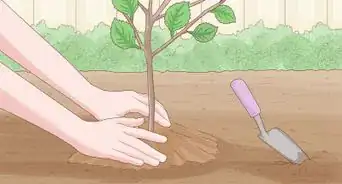


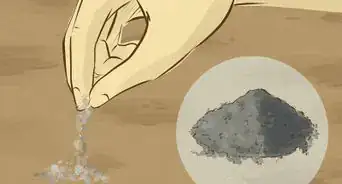

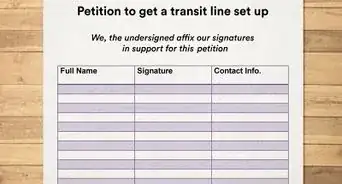
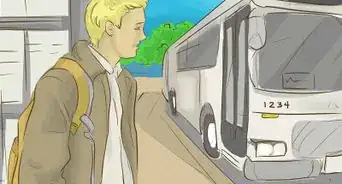

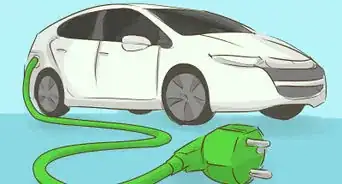
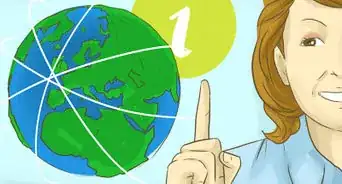
References
- ↑ https://www.digitalnewsreport.org/survey/2020/how-people-access-news-about-climate-change/
- ↑ https://www.nytimes.com/2020/01/02/opinion/climate-change-deniers.html
- ↑ https://climatechange.lta.org/get-started/inspire/raise-awareness/
- ↑ https://www.bbc.com/news/world-europe-50401308
- ↑ https://19january2017snapshot.epa.gov/climate-impacts/climate-impacts-ecosystems_.html
- ↑ https://www.nrdc.org/stories/your-guide-talking-kids-all-ages-about-climate-change
- ↑ https://www.nrdc.org/stories/green-your-school
- ↑ Kathryn Kellogg. Sustainability Specialist. Expert Interview. 28 June 2019.
- ↑ https://www.nrdc.org/stories/your-guide-talking-kids-all-ages-about-climate-change
- ↑ https://wp.stolaf.edu/news/a-well-designed-plan-to-raise-awareness-about-climate-change
- ↑ https://19january2017snapshot.epa.gov/climate-impacts/climate-impacts-society_.html
- ↑ https://19january2017snapshot.epa.gov/climate-impacts/climate-impacts-ecosystems_.html
- ↑ https://www.pennfuture.org/Blog-Item-How-Artists-Interpret-Climate-Change-Raise-Awareness
- ↑ https://www.theguardian.com/environment/2020/jan/07/save-the-planet-guide-fighting-climate-crisis-veganism-flying-earth-emergency-action
- ↑ https://www.cnn.com/2014/05/06/us/climate-change-strategies/index.html
- ↑ https://www.npr.org/2019/04/25/716359470/eight-ways-to-teach-climate-change-in-almost-any-classroom
- ↑ https://www.fieldmuseum.org/sites/default/files/CAPN_action_strategies_0.pdf
- ↑ https://www.degruyter.com/document/doi/10.1515/npf-2012-0001/html
- ↑ https://www.vox.com/future-perfect/2019/12/2/20976180/climate-change-best-charities-effective-philanthropy
- ↑ https://climategen.org/take-action/take-action-in-your-home-school-or-community/
- ↑ https://www.npr.org/2019/04/25/716359470/eight-ways-to-teach-climate-change-in-almost-any-classroom
- ↑ https://www.npr.org/2019/09/20/762629200/mass-protests-in-australia-kick-off-global-climate-strike-ahead-of-u-n-summit
- ↑ https://www.cnn.com/2014/05/06/us/climate-change-strategies/index.html
About This Article

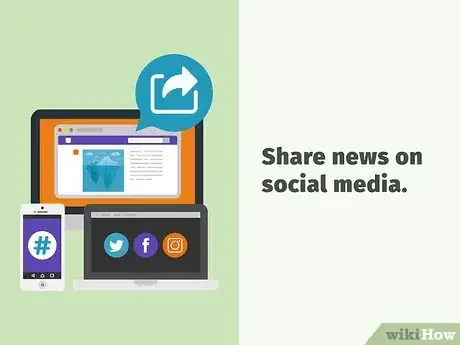
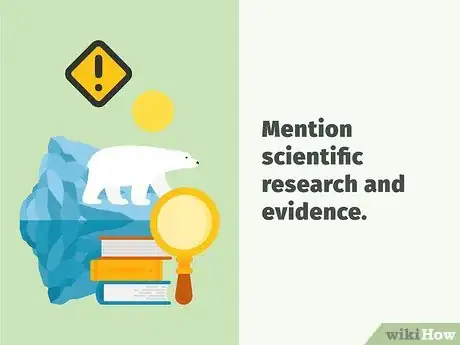
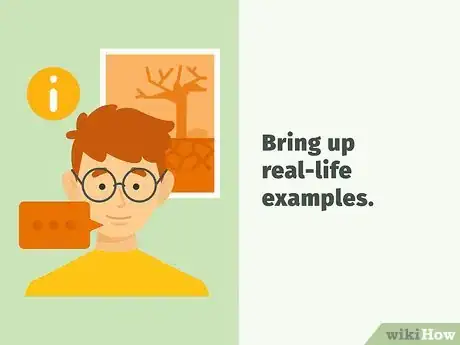
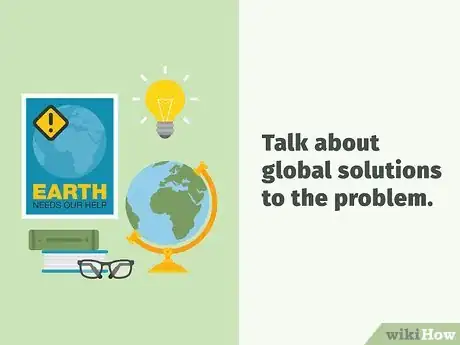



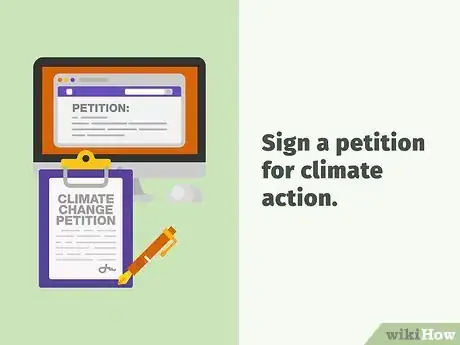
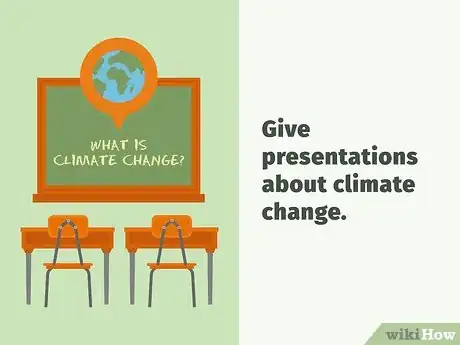
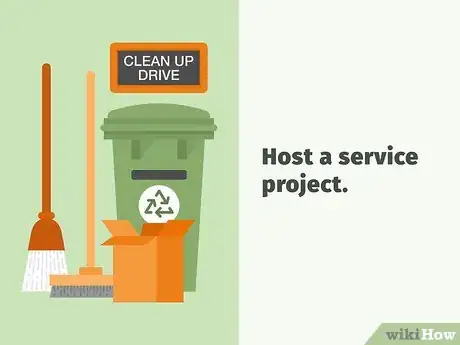
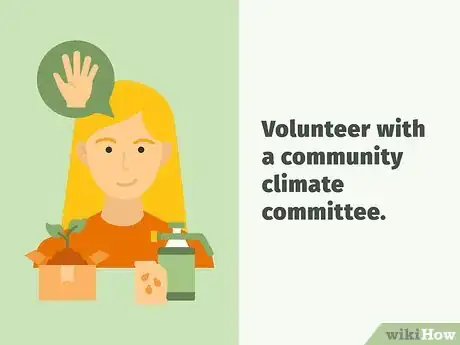
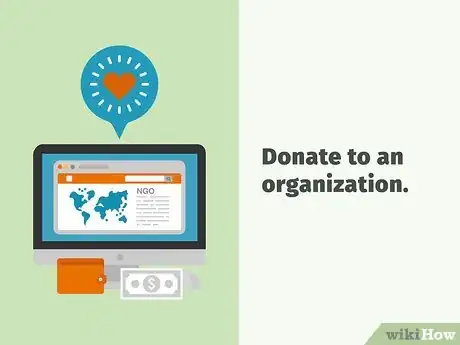


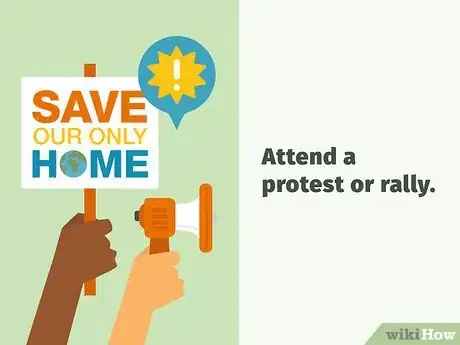









-Step-14-Version-6.webp)




































